Dealing with complex decisions is a struggle teams find themselves in every day. But the decision making process can easily bog teams down by requiring endless meetings and back-and-forth discussion. This is just seen as ‘normal’ - the cost of doing business.
But actually it’s a symptom of not communicating in the right way. Complex discussions go off the rails because they lack structure. It’s hard for someone to give you the answer you want because if they don’t know the available options. Or maybe the fears they have about the next phase of the project need to answered first before they can give you the answer you need.
Companies typically rely on scheduled meetings to hash these things out. But conversations can quickly digress and nothing gets resolved. Certain people want to be ’seen’ at certain meetings, so the whole event can quickly become political rather than a simple problem solving exercise.
Why async works
Making these decisions async is often the best way to keep everyone in the loop, make them accountable, and get the answers you need.
This is because async communication encourages you to think through the problem before your weigh in. Taking 5 minutes to digest the problem and craft your reply works wonders. I can’t tell you the amount of times I’ve jumped the gun, gone to reply, and then re-read/watched back the original post and realised I’ve got something wrong.
In this post, we’ll use a real-life example of a post on Cushion. It’s a fairly typical decision, one you’ve probably made yourself. The team has to choose an email provider service and there are lots of opinions about which one to choose.
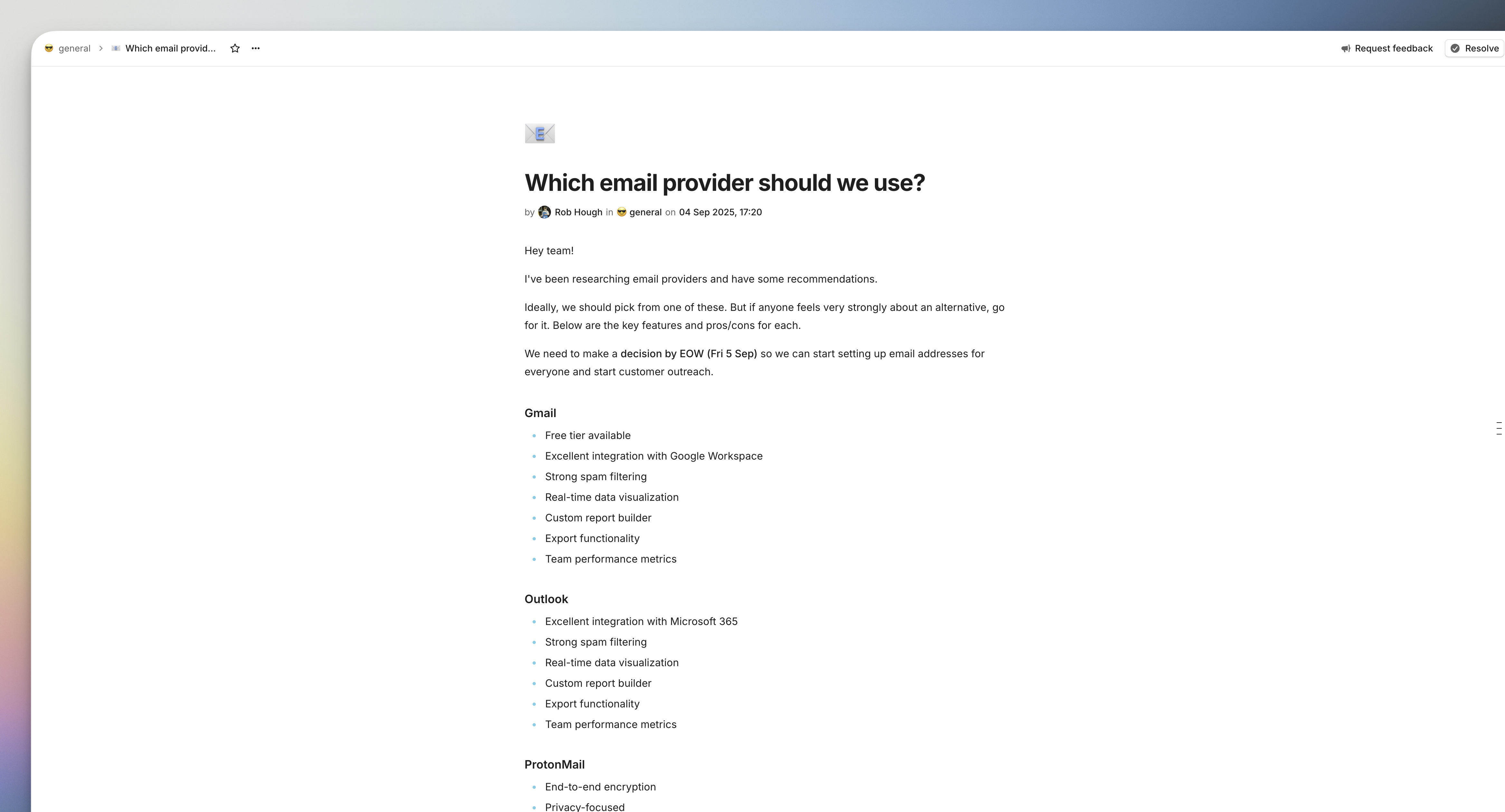
Below, we’ll go through several tips using this post as an example - showing you how to communicate effectively to make decisions faster using async communication.
FYI You can just as easily use video or audio to communicate, but for this example we’ll be focusing on written posts.
Start with the answer you want
In newspaper journalism this is called the ‘inverted pyramid’. By starting at the end, the reader knows exactly what you want. Start writing a post by summing up the decision that needs to be made, or the feedback you’re looking for in the first paragraph.
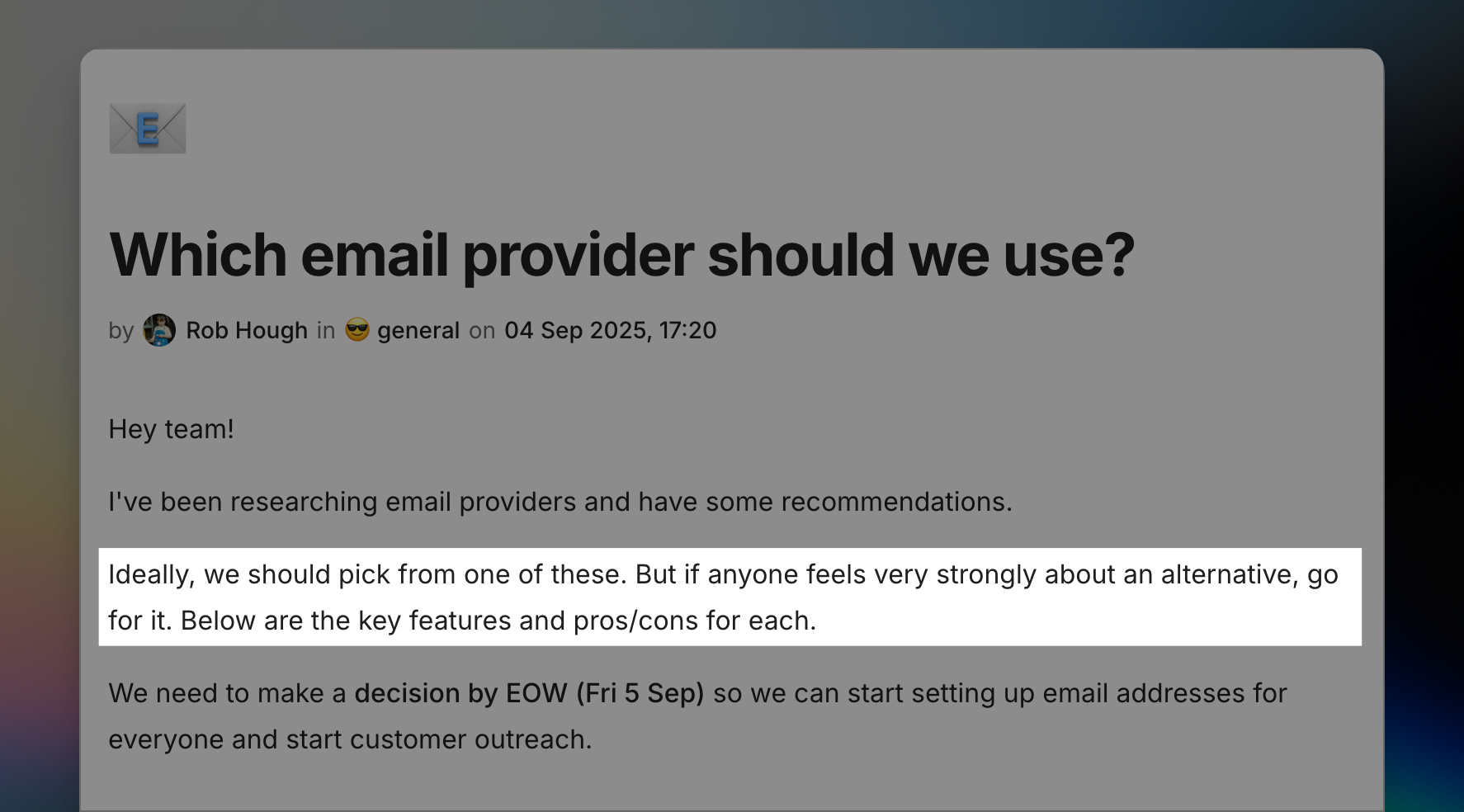
This cuts right to the point. Already as a reader, I know exactly what is being asked of me. Also any fears I have about not finding a viable choice are addressed so I can either bring an alternative or park that and pick one from the list.
This cuts out so much back and forth where typically people will mistake this request for a decision as “Give me more examples!”
Give context to help decision makers
It’s not enough just to ask for decision on options. Context helps people make informed decisions.
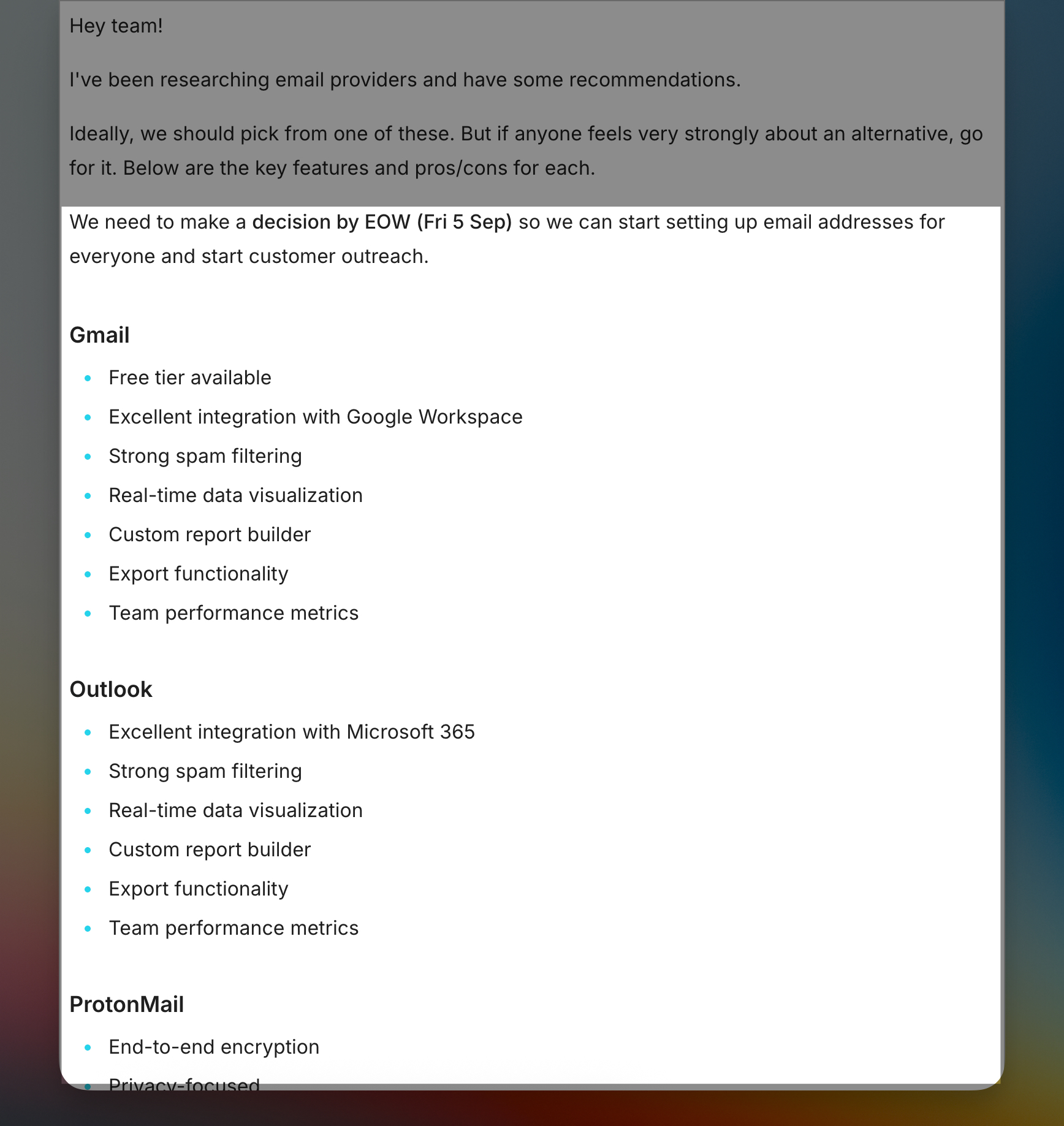
On the post you can see various pros/cons for each provider as well as a short write-up why we need an email provider in the first place.
That probably seems obvious. But this helps make sure there are no misunderstandings (usually ones people feel to silly to clarify) and also helps people weeks, months, or even years from now understand why this decision needed to be made.
Here’s where it’s important to be clear about deadlines or if you’re blocked. This information really helps decision makers make a call and sometimes can change what decision they might eventually go with.
Include the correct people
It’s nice to be transparent with decisions inside a company. By default, cushion makes every channel public so everyone can see anything. You have to deliberately hide things away.
However, that doesn’t mean everyone’s opinion on every subject is equal. Some may be more informed, have more skin in the game, or just frankly matter more (the CEO can often make more calls that the junior intern).
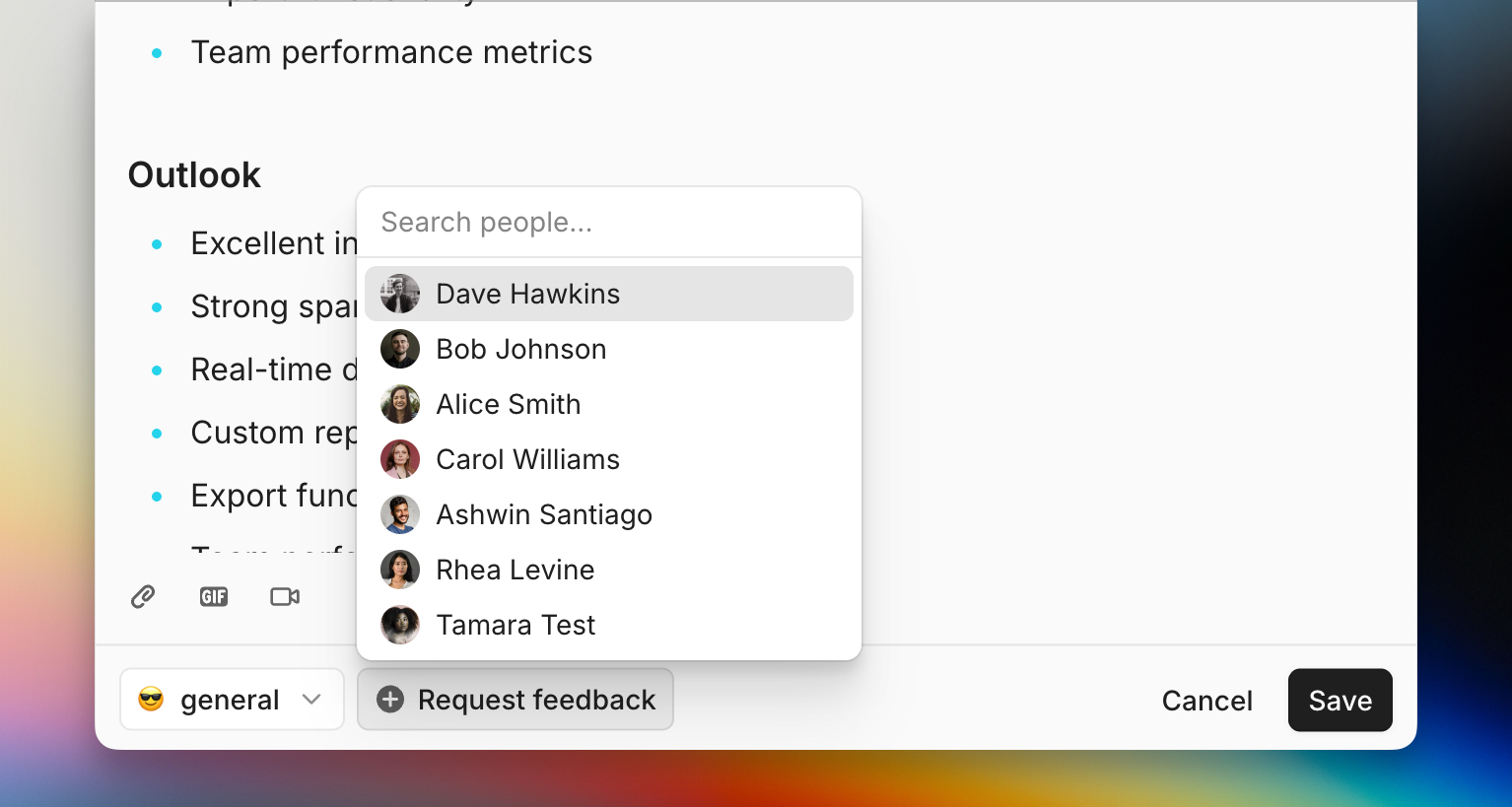
In cushion, we’ve built this right into the product. On any post you can tag certain people for feedback, who will be notified that you’re specifically asking them for feedback. Anyone else can still comment, but the feedback from these people is triaged so you can prioritize.
Keep discussion in one place
When you’ve worked on lots of projects one thing you notice is most of your time is spent looking for things. Most companies use so many apps in their workflow, and a majority of them having commenting features. It’s incredibly hard to keep a handle on things when the discussion is scattered between Slack, Teams, Email, Google Docs, Google Sheets, Google Slides, and that one-off Zoom meeting you had.
Keeping all the discussion in one place helps keep everyone sane. This could be in a Slack thread, Notion doc, or email chain. It doesn’t matter, it just needs to be in one place.
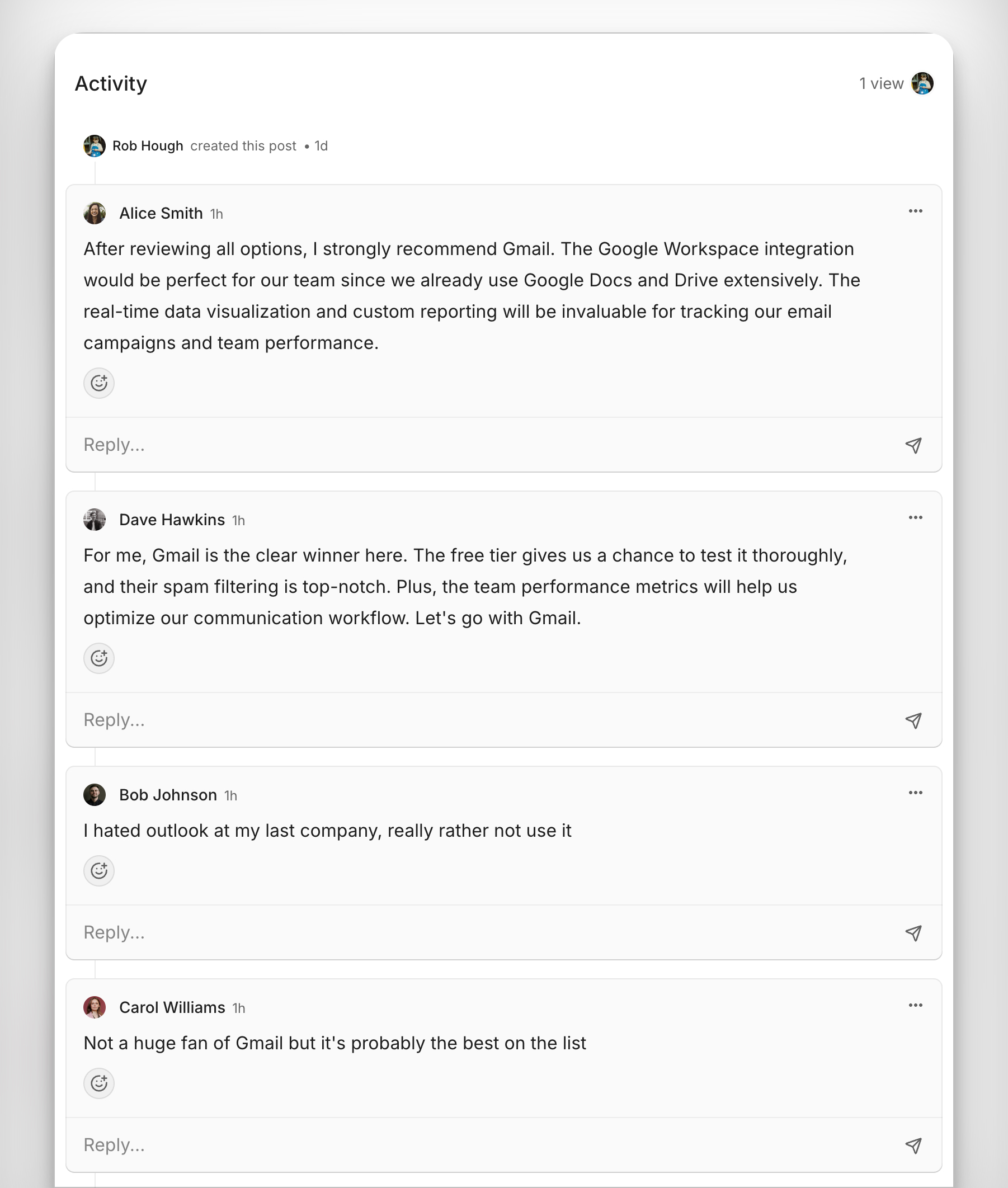
In cushion, a post and all it’s comments are threaded by default. There’s no group chat or separate document to leave comments in so you are forced to do it with everyone else.
This makes coming back and referencing what people said a breeze. Doesn’t matter if it was 5 minutes ago or 5 years.
Push for a decision
Eventually, after all the discussion, a call needs to be made. Even if there isn’t a unanimous option. The famous truism used by teams at Amazon ‘disagree and commit’ is a great idea for teams to adopt.
Discussions that drag on forever sap momentum on a project. You can’t always guarantee you’ll make the “perfect” call, but making a call is better than never making one at all.
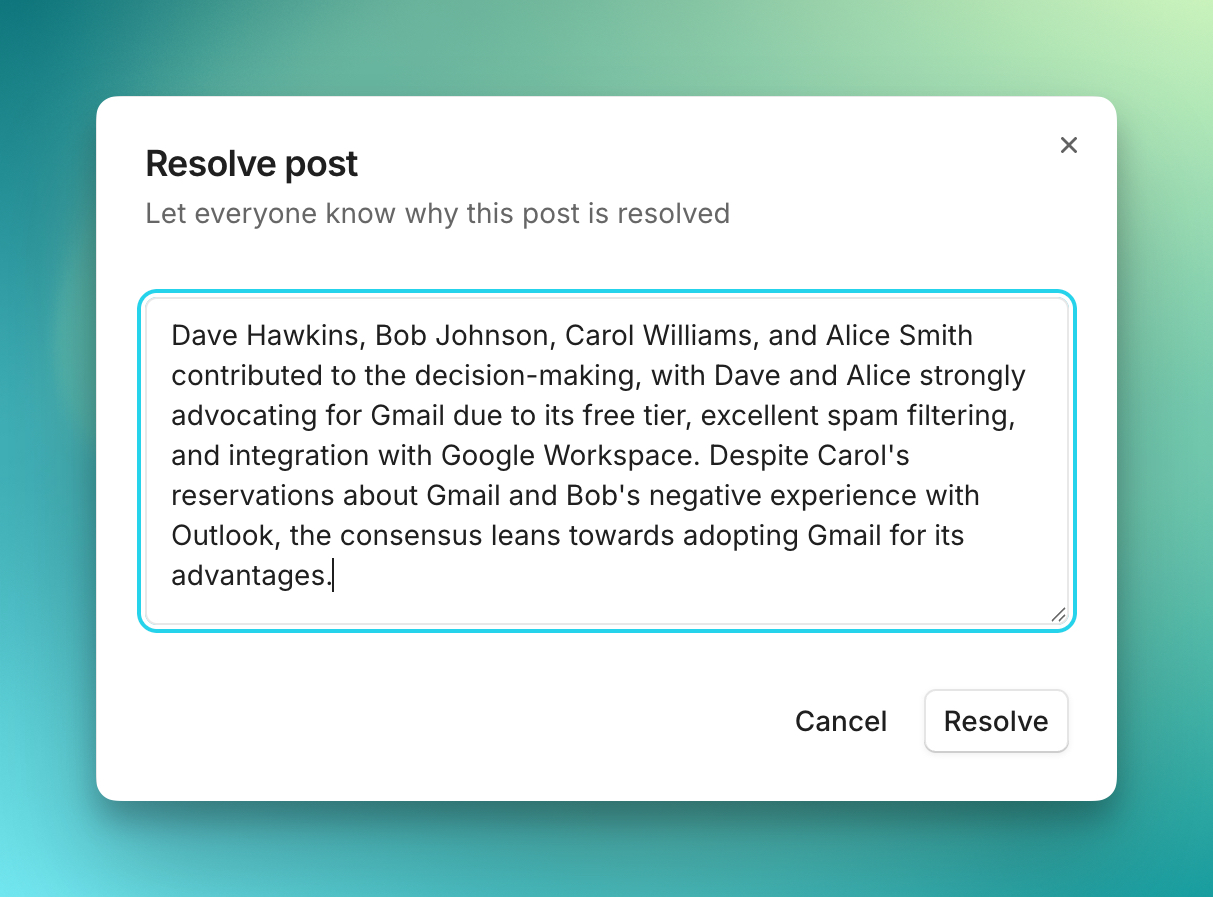
In cushion, we built this right in by having a ‘Resolve’ feature which analyses all the discussion and pulls out the resolution for you. This is then pinned at the top of the document, so whenever you need to come back to it - you don’t need to read through the entire comment thread again.
In your post, you can outline a clear final decision maker (or maybe it’s obvious who this is)
Reference the decision in future
It’s likely that whatever decision you’re making will inform things in the future. It’s really easy to just make the call and move on. But this often causes issues when people bought onto the project later don’t understand why things are the way they are. Or worse still, 6 months later when you forget why that decision was made yourself.

Being able to refer back to that decision is one of great benefits of async. With a scheduled meeting, you lose the reason and you can’t build on it. When something is naturally documented, you can always refer back to it and help someone build the reasoning chain of why things are the way they are.
When you need a scheduled meeting
Async should be the default method of communication for most work, especially complex decision making. However there comes a time when you may need to schedule a meeting. This could be because:
- The problem isn’t clear
- The decision is a “one-way door”
- There is strong disagreement between senior team
The goal here isn’t to avoid meeting entirely, but to use it as an additional discussion point on top of your async communication. When you know the majority of it already hashed out, that meeting becomes laser focused on solving a very specific problem. You’ll turn a 2 hour chat into a 15 minute clear discussion.
Making it work for your team
What we love about async communication is you’re probably already doing a few of these things. Maybe even all. It’s just about using the existing tools you have in the right place.
This is why we built cushion. It helps you communicate in the way that’s best for the task at hand, instead of forcing you to schedule meetings or ping hundreds of Slack messages to brute force what you want.
Try these things out, and you’ll forget you ever worked a different way.
